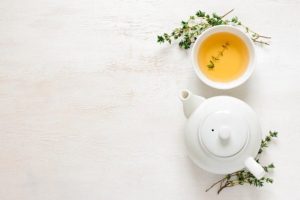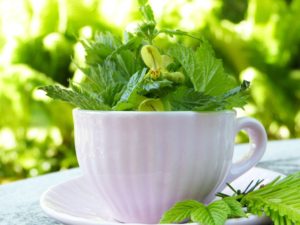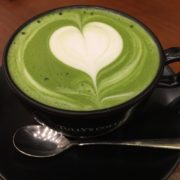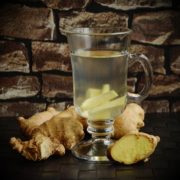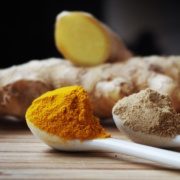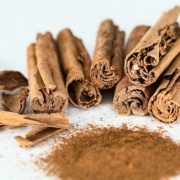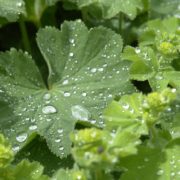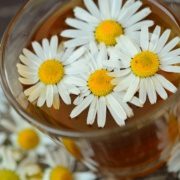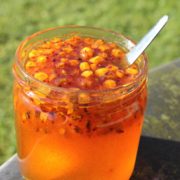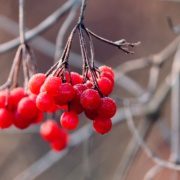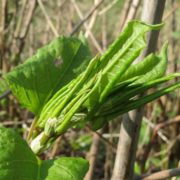6556741
{6556741:S336MXZF},{6556741:6XN7JT66},{6556741:ADRHM4JQ},{6556741:SG8UHGWM},{6556741:C3NMUC6T},{6556741:CUCEVEXD},{6556741:6T4VAH2Q},{6556741:ESRZKKDC},{6556741:K2ZBKSEU}
vancouver
50
creator
asc
27697
https://endometriose.app/wp-content/plugins/zotpress/
%7B%22status%22%3A%22success%22%2C%22updateneeded%22%3Afalse%2C%22instance%22%3A%22zotpress-d9a98ef666cd0a2d1d522fdaa568511b%22%2C%22meta%22%3A%7B%22request_last%22%3A0%2C%22request_next%22%3A0%2C%22used_cache%22%3Atrue%7D%2C%22data%22%3A%5B%7B%22key%22%3A%22S336MXZF%22%2C%22library%22%3A%7B%22id%22%3A6556741%7D%2C%22meta%22%3A%7B%22creatorSummary%22%3A%22Cc%20et%20al.%22%2C%22parsedDate%22%3A%222013-01%22%2C%22numChildren%22%3A0%7D%2C%22bib%22%3A%22%3Cdiv%20class%3D%5C%22csl-bib-body%5C%22%20style%3D%5C%22line-height%3A%201.35%3B%20%5C%22%3E%5Cn%20%20%3Cdiv%20class%3D%5C%22csl-entry%5C%22%20style%3D%5C%22clear%3A%20left%3B%20%5C%22%3E%5Cn%20%20%20%20%3Cdiv%20class%3D%5C%22csl-left-margin%5C%22%20style%3D%5C%22float%3A%20left%3B%20padding-right%3A%200.5em%3B%20text-align%3A%20right%3B%20width%3A%201em%3B%5C%22%3E1.%20%3C%5C%2Fdiv%3E%3Cdiv%20class%3D%5C%22csl-right-inline%5C%22%20style%3D%5C%22margin%3A%200%20.4em%200%201.5em%3B%5C%22%3ECc%20W%2C%20H%20X%2C%20Gc%20M%2C%20T%20Z%2C%20Ko%20C%2C%20Cy%20C%2C%20et%20al.%20Prodrug%20of%20Green%20Tea%20epigallocatechin-3-gallate%20%28Pro-EGCG%29%20as%20a%20Potent%20Anti-Angiogenesis%20Agent%20for%20Endometriosis%20in%20Mice%20%5BInternet%5D.%20Angiogenesis.%202013%20%5Bcited%202020%20Jun%2019%5D.%20Available%20from%3A%20%3Ca%20href%3D%27https%3A%5C%2F%5C%2Fpubmed.ncbi.nlm.nih.gov%5C%2F22948799%5C%2F%27%3Ehttps%3A%5C%2F%5C%2Fpubmed.ncbi.nlm.nih.gov%5C%2F22948799%5C%2F%3C%5C%2Fa%3E%3C%5C%2Fdiv%3E%5Cn%20%20%3C%5C%2Fdiv%3E%5Cn%3C%5C%2Fdiv%3E%22%2C%22data%22%3A%7B%22itemType%22%3A%22webpage%22%2C%22title%22%3A%22Prodrug%20of%20Green%20Tea%20epigallocatechin-3-gallate%20%28Pro-EGCG%29%20as%20a%20Potent%20Anti-Angiogenesis%20Agent%20for%20Endometriosis%20in%20Mice%22%2C%22creators%22%3A%5B%7B%22creatorType%22%3A%22author%22%2C%22firstName%22%3A%22Wang%22%2C%22lastName%22%3A%22Cc%22%7D%2C%7B%22creatorType%22%3A%22author%22%2C%22firstName%22%3A%22Xu%22%2C%22lastName%22%3A%22H%22%7D%2C%7B%22creatorType%22%3A%22author%22%2C%22firstName%22%3A%22Man%22%2C%22lastName%22%3A%22Gc%22%7D%2C%7B%22creatorType%22%3A%22author%22%2C%22firstName%22%3A%22Zhang%22%2C%22lastName%22%3A%22T%22%7D%2C%7B%22creatorType%22%3A%22author%22%2C%22firstName%22%3A%22Chu%22%2C%22lastName%22%3A%22Ko%22%7D%2C%7B%22creatorType%22%3A%22author%22%2C%22firstName%22%3A%22Chu%22%2C%22lastName%22%3A%22Cy%22%7D%2C%7B%22creatorType%22%3A%22author%22%2C%22firstName%22%3A%22Cheng%22%2C%22lastName%22%3A%22Jt%22%7D%2C%7B%22creatorType%22%3A%22author%22%2C%22firstName%22%3A%22Li%22%2C%22lastName%22%3A%22G%22%7D%2C%7B%22creatorType%22%3A%22author%22%2C%22firstName%22%3A%22He%22%2C%22lastName%22%3A%22Yx%22%7D%2C%7B%22creatorType%22%3A%22author%22%2C%22firstName%22%3A%22Qin%22%2C%22lastName%22%3A%22L%22%7D%2C%7B%22creatorType%22%3A%22author%22%2C%22firstName%22%3A%22Lau%22%2C%22lastName%22%3A%22Ts%22%7D%2C%7B%22creatorType%22%3A%22author%22%2C%22firstName%22%3A%22Kwong%22%2C%22lastName%22%3A%22J%22%7D%2C%7B%22creatorType%22%3A%22author%22%2C%22firstName%22%3A%22Chan%22%2C%22lastName%22%3A%22Th%22%7D%5D%2C%22abstractNote%22%3A%22Green%20tea%20epigallocatechin-3-gallate%20%28EGCG%29%20can%20inhibit%20angiogenesis%20and%20development%20of%20an%20experimental%20endometriosis%20model%20in%20mice%2C%20but%20it%20suffers%20from%20poor%20bioavailability.%20A%20prodrug%20of%20EGCG%20%28pro-EGCG%2C%20EGCG%20octaacetate%29%20is%20utilized%20to%20enhance%20the%20stability%20and%20bioavailability%20of%20EGCG%20in%20vivo.%20In%20t%20%5Cu2026%22%2C%22date%22%3A%222013%20Jan%22%2C%22url%22%3A%22https%3A%5C%2F%5C%2Fpubmed.ncbi.nlm.nih.gov%5C%2F22948799%5C%2F%22%2C%22language%22%3A%22en%22%2C%22collections%22%3A%5B%5D%2C%22dateModified%22%3A%222020-06-19T08%3A22%3A58Z%22%7D%7D%2C%7B%22key%22%3A%22ADRHM4JQ%22%2C%22library%22%3A%7B%22id%22%3A6556741%7D%2C%22meta%22%3A%7B%22creatorSummary%22%3A%22Ilhan%20et%20al.%22%2C%22parsedDate%22%3A%222019-09%22%2C%22numChildren%22%3A0%7D%2C%22bib%22%3A%22%3Cdiv%20class%3D%5C%22csl-bib-body%5C%22%20style%3D%5C%22line-height%3A%201.35%3B%20%5C%22%3E%5Cn%20%20%3Cdiv%20class%3D%5C%22csl-entry%5C%22%20style%3D%5C%22clear%3A%20left%3B%20%5C%22%3E%5Cn%20%20%20%20%3Cdiv%20class%3D%5C%22csl-left-margin%5C%22%20style%3D%5C%22float%3A%20left%3B%20padding-right%3A%200.5em%3B%20text-align%3A%20right%3B%20width%3A%201em%3B%5C%22%3E1.%20%3C%5C%2Fdiv%3E%3Cdiv%20class%3D%5C%22csl-right-inline%5C%22%20style%3D%5C%22margin%3A%200%20.4em%200%201.5em%3B%5C%22%3EIlhan%20M%2C%20Ali%20Z%2C%20Khan%20IA%2C%20Ta%26%23x15F%3Btan%20H%2C%20K%26%23xFC%3Bpeli%20Akkol%20E.%20Promising%20activity%20of%20Anthemis%20austriaca%20Jacq.%20on%20the%20endometriosis%20rat%20model%20and%20isolation%20of%20its%20active%20constituents.%20Saudi%20Pharm%20J%20%5BInternet%5D.%202019%20Sep%20%5Bcited%202020%20Jun%2019%5D%3B27%286%29%3A889%26%23x2013%3B99.%20Available%20from%3A%20%3Ca%20href%3D%27https%3A%5C%2F%5C%2Fwww.ncbi.nlm.nih.gov%5C%2Fpmc%5C%2Farticles%5C%2FPMC6733967%5C%2F%27%3Ehttps%3A%5C%2F%5C%2Fwww.ncbi.nlm.nih.gov%5C%2Fpmc%5C%2Farticles%5C%2FPMC6733967%5C%2F%3C%5C%2Fa%3E%3C%5C%2Fdiv%3E%5Cn%20%20%3C%5C%2Fdiv%3E%5Cn%3C%5C%2Fdiv%3E%22%2C%22data%22%3A%7B%22itemType%22%3A%22journalArticle%22%2C%22title%22%3A%22Promising%20activity%20of%20Anthemis%20austriaca%20Jacq.%20on%20the%20endometriosis%20rat%20model%20and%20isolation%20of%20its%20active%20constituents%22%2C%22creators%22%3A%5B%7B%22creatorType%22%3A%22author%22%2C%22firstName%22%3A%22Mert%22%2C%22lastName%22%3A%22Ilhan%22%7D%2C%7B%22creatorType%22%3A%22author%22%2C%22firstName%22%3A%22Zulfiqar%22%2C%22lastName%22%3A%22Ali%22%7D%2C%7B%22creatorType%22%3A%22author%22%2C%22firstName%22%3A%22Ikhlas%20A.%22%2C%22lastName%22%3A%22Khan%22%7D%2C%7B%22creatorType%22%3A%22author%22%2C%22firstName%22%3A%22Hakk%5Cu0131%22%2C%22lastName%22%3A%22Ta%5Cu015ftan%22%7D%2C%7B%22creatorType%22%3A%22author%22%2C%22firstName%22%3A%22Esra%22%2C%22lastName%22%3A%22K%5Cu00fcpeli%20Akkol%22%7D%5D%2C%22abstractNote%22%3A%22Anthemis%20austriaca%20Jacq.%20flowers%20are%20traditionally%20used%20to%20alleviate%20abdominal%20pain%2C%20hemorrhoids%2C%20ovary%20diseases%20and%20pneumonia.%20This%20study%20aimed%20to%20investigate%20the%20effects%20of%20A.%20austriaca%20flowers%2C%20which%20are%20frequently%20used%20in%20gynecological%20disorders%2C%20on%20the%20rat%20endometriosis%20model.%20The%20rat%20endometriosis%20model%20was%20used%20to%20evaluate%20the%20potential%20activity%20of%20the%20plant%20in%20endometriosis.%20The%20dried%20plant%20material%20was%20extracted%20with%20n-hexane%2C%20ethyl%20acetate%20%28EtOAc%29%2C%20and%20methanol%20%28MeOH%29%2C%20successively.%20The%20obtained%20extracts%20from%20A.%20austriaca%20flowers%20were%20applied%20to%20the%20rats.%20The%20adhesion%20scores%2C%20endometrial%20foci%20areas%2C%20and%20cytokine%20levels%20of%20the%20peritoneal%20fluids%20were%20measured%20on%20surgical%20induction%20of%20endometriosis%20in%20rats.%20The%20adhesion%20scores%2C%20endometriotic%20volume%2C%20and%20cytokine%20levels%20of%20the%20peritoneal%20fluids%20were%20reduced%20in%20the%20EtOAc%2C%20MeOH%2C%20and%20buserelin%20acetate-treated%20%28reference%29%20groups.%20The%20MeOH%20extract%20reduced%20the%20adhesion%20scores%20and%20endometrial%20foci%20areas%20from%203.1%20to%201.1%20%28p%5Cu202f%3C%5Cu202f0.01%29%20and%20from%2086.4%20to%2040.5%20%28p%5Cu202f%3C%5Cu202f0.01%29%2C%20respectively%20and%20also%20the%20MeOH%20extract%20reduced%20tumor%20necrosis%20factor%20%28TNF%29-%5Cu03b1%2C%20vascular%20endothelial%20growth%20factor%20%28VEGF%29%2C%20and%20interleukin%20%28IL%29-6%20levels%20of%20the%20peritoneal%20fluids%20from%2013.7%20to%203.8%20%28p%5Cu202f%3C%5Cu202f0.01%29%2C%20from%2028.4%20to%2016.3%20%28p%5Cu202f%3C%5Cu202f0.05%29%20and%20from%2050.2%20to%2024.3%20%28p%5Cu202f%3C%5Cu202f0.01%29%2C%20respectively.%20Therefore%2C%20isolation%20studies%20were%20conducted%20on%20the%20EtOAc%20and%20MeOH%20extracts.%20After%20the%20MeOH%20extract%20was%20fractionated%20using%20RP-18%20column%2C%20the%20obtained%20subfractions%20were%20evaluated%20again%20on%20the%20endometriosis%20rat%20model.%20Subfractions%20A%20and%20C%20of%20the%20MeOH%20extract%20displayed%20statistically%20significant%20activity%20on%20the%20endometriosis%20rat%20model.%20Phytochemical%20investigation%20resulted%20in%20the%20isolation%20of%204-%5Cu03b2-D-glucopyranosyloxy-6-methyl-2H-pyran-2-one%20%281%29%20from%20Fr.%20A%20and%20quercetin%20%282%29%2C%20apigenin-7-O-%283%5Cu2033-O-acetyl%29-%5Cu03b2-D-glucopyranoside%20%283%29%2C%20apigenin-7-O-%286%5Cu2033-O-acetyl%29-%5Cu03b2-D-glucopyranoside%20%284%29%2C%20apigenin-7-O-%5Cu03b2-D-glucopyranoside%20%285%29%2C%20quercetin-7-O-%5Cu03b2-D-glucopyranoside%20%286%29%20from%20Fr.%20C.%20Moreover%2C%20%5Cu03b2-sitosterol-3-O-%5Cu03b2-D-glucopyranoside%20%287%29%20was%20isolated%20from%20the%20EtOAc%20extract.%20As%20a%20conclusion%2C%20the%20MeOH%20extract%20obtained%20from%20A.%20austriaca%20flowers%20contributed%20to%20the%20regression%20of%20endometriosis.%20In%20addition%2C%20flavonoids%20and%20sterols%20of%20the%20plant%20were%20detected%20as%20the%20possible%20compounds%20responsible%20for%20the%20activity.%22%2C%22date%22%3A%222019-9%22%2C%22language%22%3A%22%22%2C%22DOI%22%3A%2210.1016%5C%2Fj.jsps.2019.06.002%22%2C%22ISSN%22%3A%221319-0164%22%2C%22url%22%3A%22https%3A%5C%2F%5C%2Fwww.ncbi.nlm.nih.gov%5C%2Fpmc%5C%2Farticles%5C%2FPMC6733967%5C%2F%22%2C%22collections%22%3A%5B%5D%2C%22dateModified%22%3A%222020-06-19T08%3A24%3A59Z%22%7D%7D%2C%7B%22key%22%3A%22SG8UHGWM%22%2C%22library%22%3A%7B%22id%22%3A6556741%7D%2C%22meta%22%3A%7B%22creatorSummary%22%3A%22Ilhan%20et%20al.%22%2C%22parsedDate%22%3A%222019-06%22%2C%22numChildren%22%3A0%7D%2C%22bib%22%3A%22%3Cdiv%20class%3D%5C%22csl-bib-body%5C%22%20style%3D%5C%22line-height%3A%201.35%3B%20%5C%22%3E%5Cn%20%20%3Cdiv%20class%3D%5C%22csl-entry%5C%22%20style%3D%5C%22clear%3A%20left%3B%20%5C%22%3E%5Cn%20%20%20%20%3Cdiv%20class%3D%5C%22csl-left-margin%5C%22%20style%3D%5C%22float%3A%20left%3B%20padding-right%3A%200.5em%3B%20text-align%3A%20right%3B%20width%3A%201em%3B%5C%22%3E1.%20%3C%5C%2Fdiv%3E%3Cdiv%20class%3D%5C%22csl-right-inline%5C%22%20style%3D%5C%22margin%3A%200%20.4em%200%201.5em%3B%5C%22%3EIlhan%20M%2C%20Dereli%20FTG%2C%20Akkol%20EK.%20Novel%20Drug%20Targets%20with%20Traditional%20Herbal%20Medicines%20for%20Overcoming%20Endometriosis.%20Curr%20Drug%20Deliv%20%5BInternet%5D.%202019%20Jun%20%5Bcited%202020%20Jun%2019%5D%3B16%285%29%3A386%26%23x2013%3B99.%20Available%20from%3A%20%3Ca%20href%3D%27https%3A%5C%2F%5C%2Fwww.ncbi.nlm.nih.gov%5C%2Fpmc%5C%2Farticles%5C%2FPMC6637095%5C%2F%27%3Ehttps%3A%5C%2F%5C%2Fwww.ncbi.nlm.nih.gov%5C%2Fpmc%5C%2Farticles%5C%2FPMC6637095%5C%2F%3C%5C%2Fa%3E%3C%5C%2Fdiv%3E%5Cn%20%20%3C%5C%2Fdiv%3E%5Cn%3C%5C%2Fdiv%3E%22%2C%22data%22%3A%7B%22itemType%22%3A%22journalArticle%22%2C%22title%22%3A%22Novel%20Drug%20Targets%20with%20Traditional%20Herbal%20Medicines%20for%20Overcoming%20Endometriosis%22%2C%22creators%22%3A%5B%7B%22creatorType%22%3A%22author%22%2C%22firstName%22%3A%22Mert%22%2C%22lastName%22%3A%22Ilhan%22%7D%2C%7B%22creatorType%22%3A%22author%22%2C%22firstName%22%3A%22Fatma%20Tu%5Cu011f%5Cu00e7e%20G%5Cu00fcra%5Cu011fa%5Cu00e7%22%2C%22lastName%22%3A%22Dereli%22%7D%2C%7B%22creatorType%22%3A%22author%22%2C%22firstName%22%3A%22Esra%20K%5Cu00fcpeli%22%2C%22lastName%22%3A%22Akkol%22%7D%5D%2C%22abstractNote%22%3A%22Endometriosis%20is%20a%20disease%20in%20which%20the%20lining%20of%20the%20endometrium%20is%20found%20outside%20of%20the%20uter-us.%20Recent%20medical%20treatments%20for%20endometriosis%20have%20adverse%20effects%2C%20limiting%20their%20long-term%20use.%20Fur-thermore%2C%20the%20recurrence%20of%20the%20disease%20after%20the%20cessation%20of%20therapy%20is%20quite%20common%2C%20and%20most%20patients%20need%20to%20continue%20treatment%20to%20maintain%20a%20hypoestrogenic%20environment%20till%20conception.%20Notwithstanding%20recent%20advances%20in%20computational%20and%20chemical%20practices%2C%20traditional%20medicines%20are%20considered%20the%20most%20consistent%20sources%20for%20the%20discovery%20of%20new%20drugs.%20Numerous%20medicinal%20plants%20and%20plant-derived%20com-pounds%20have%20been%20tested%20against%20gynecological%20disorders%2C%20mainly%20endometriosis.%20This%20review%20aimed%20to%20describe%20the%20pharmacological%20activity%20profile%20of%20the%20medicinal%20plants%20and%20their%20active%20ingredients%20and%20draw%20attention%20to%20the%20discovery%20of%20multitargeted%20drug%20molecules%20for%20rational%20therapy.%22%2C%22date%22%3A%222019-6%22%2C%22language%22%3A%22%22%2C%22DOI%22%3A%2210.2174%5C%2F1567201816666181227112421%22%2C%22ISSN%22%3A%221567-2018%22%2C%22url%22%3A%22https%3A%5C%2F%5C%2Fwww.ncbi.nlm.nih.gov%5C%2Fpmc%5C%2Farticles%5C%2FPMC6637095%5C%2F%22%2C%22collections%22%3A%5B%5D%2C%22dateModified%22%3A%222020-06-19T08%3A25%3A14Z%22%7D%7D%2C%7B%22key%22%3A%22C3NMUC6T%22%2C%22library%22%3A%7B%22id%22%3A6556741%7D%2C%22meta%22%3A%7B%22creatorSummary%22%3A%22Ilhan%20et%20al.%22%2C%22parsedDate%22%3A%222019-10-28%22%2C%22numChildren%22%3A0%7D%2C%22bib%22%3A%22%3Cdiv%20class%3D%5C%22csl-bib-body%5C%22%20style%3D%5C%22line-height%3A%201.35%3B%20%5C%22%3E%5Cn%20%20%3Cdiv%20class%3D%5C%22csl-entry%5C%22%20style%3D%5C%22clear%3A%20left%3B%20%5C%22%3E%5Cn%20%20%20%20%3Cdiv%20class%3D%5C%22csl-left-margin%5C%22%20style%3D%5C%22float%3A%20left%3B%20padding-right%3A%200.5em%3B%20text-align%3A%20right%3B%20width%3A%201em%3B%5C%22%3E1.%20%3C%5C%2Fdiv%3E%3Cdiv%20class%3D%5C%22csl-right-inline%5C%22%20style%3D%5C%22margin%3A%200%20.4em%200%201.5em%3B%5C%22%3EIlhan%20M%2C%20Ali%20Z%2C%20Khan%20IA%2C%20Ta%26%23x15F%3Btan%20H%2C%20K%26%23xFC%3Bpeli%20Akkol%20E.%20Bioactivity-guided%20isolation%20of%20flavonoids%20from%20Urtica%20dioica%20L.%20and%20their%20effect%20on%20endometriosis%20rat%20model.%20J%20Ethnopharmacol.%202019%20Oct%2028%3B243%3A112100.%3C%5C%2Fdiv%3E%5Cn%20%20%20%3C%5C%2Fdiv%3E%5Cn%3C%5C%2Fdiv%3E%22%2C%22data%22%3A%7B%22itemType%22%3A%22journalArticle%22%2C%22title%22%3A%22Bioactivity-guided%20isolation%20of%20flavonoids%20from%20Urtica%20dioica%20L.%20and%20their%20effect%20on%20endometriosis%20rat%20model%22%2C%22creators%22%3A%5B%7B%22creatorType%22%3A%22author%22%2C%22firstName%22%3A%22Mert%22%2C%22lastName%22%3A%22Ilhan%22%7D%2C%7B%22creatorType%22%3A%22author%22%2C%22firstName%22%3A%22Zulfiqar%22%2C%22lastName%22%3A%22Ali%22%7D%2C%7B%22creatorType%22%3A%22author%22%2C%22firstName%22%3A%22Ikhlas%20A.%22%2C%22lastName%22%3A%22Khan%22%7D%2C%7B%22creatorType%22%3A%22author%22%2C%22firstName%22%3A%22Hakk%5Cu0131%22%2C%22lastName%22%3A%22Ta%5Cu015ftan%22%7D%2C%7B%22creatorType%22%3A%22author%22%2C%22firstName%22%3A%22Esra%22%2C%22lastName%22%3A%22K%5Cu00fcpeli%20Akkol%22%7D%5D%2C%22abstractNote%22%3A%22ETHNOPHARMACOLOGICAL%20RELEVANCE%3A%20Urtica%20dioica%20L.%20has%20been%20used%20traditionally%20for%20centuries.%20U.%20dioica%20leaves%20and%20roots%20are%20used%20as%20a%20blood%20purifier%2C%20emmenagogue%2C%20and%20diuretic%2C%20as%20well%20as%20to%20treat%20menstrual%20hemorrhage%2C%20rheumatism%2C%20and%20eczema.%20The%20present%20study%20aimed%20to%20evaluate%20the%20activity%20of%20U.%20dioica%20L.%20aerial%20parts%20in%20endometriosis%20rat%20model.%5CnMATERIALS%20AND%20METHODS%3A%20To%20evaluate%20the%20effects%20of%20the%20plant%20in%20endometriosis%2C%20n-hexane%2C%20ethyl%20acetate%20%28EtOAc%29%2C%20and%20methanol%20%28MeOH%29%20extracts%20were%20prepared%20from%20the%20aerial%20parts%20of%20the%20plant%20and%20utilized%20in%20a%20rat%20surgical%20endometriosis%20model.%20In%20this%20model%2C%20adhesion%20scores%20of%20endometriotic%20implants%20and%20the%20spherical%20volumes%20of%20ectopic%20uterine%20tissues%20were%20evaluated.%20In%20addition%20to%20these%20parameters%2C%20tumor%20necrosis%20factor%20alpha%20%28TNF-%5Cu03b1%29%2C%20vascular%20endothelial%20growth%20factor%20%28VEGF%29%2C%20and%20interleukin-6%20%28IL-6%29%20levels%20of%20the%20peritoneal%20fluids%20were%20evaluated.%20Furthermore%2C%20histopathological%20studies%20were%20conducted%20on%20the%20endometriotic%20tissues.%5CnRESULTS%3A%20Post-treatment%20implant%20volumes%20and%20adhesion%20scores%20were%20significantly%20reduced%20in%20the%20reference%20and%20the%20MeOH%20extract%20treated%20groups.%20Significant%20differences%20were%20found%20between%20the%20peritoneal%20TNF-%5Cu03b1%2C%20VEGF%2C%20and%20IL-6%20levels%20of%20MeOH%20extract%20treated%20group%20and%20those%20of%20control%20group.%20Moreover%2C%20histopathological%20findings%20supported%20the%20biological%20activity%20results.%20Furthermore%2C%20isolation%20studies%20were%20conducted%20on%20the%20MeOH%20extract%2C%20which%20showed%20prominent%20activity%20in%20the%20rat%20endometriosis%20model.%20Rutin%20%281%29%2C%20isoquercetin%20%282%29%2C%20the%20mixture%20of%20kaempferol-3-O-rutinoside%20%28nicotiflorin%29%20%283a%29%20and%20isorhamnetin-3-O-rutinoside%20%28narcissin%29%20%283b%29%20%283%29%2C%20the%20mixture%20of%20kaempferol-3-O-glucoside%20%28astragalin%29%20%284a%29%20and%20isorhamnetin-3-O-glucoside%20%284b%29%20%284%29%20were%20isolated%20from%20the%20active%20fraction.%5CnCONCLUSIONS%3A%20The%20present%20study%20demonstrated%20that%20aerial%20parts%20of%20U.%20dioica%20exhibited%20promising%20activity%20in%20the%20endometriosis%20rat%20model%20due%20to%20its%20flavonoids.%22%2C%22date%22%3A%22Oct%2028%2C%202019%22%2C%22language%22%3A%22eng%22%2C%22DOI%22%3A%2210.1016%5C%2Fj.jep.2019.112100%22%2C%22ISSN%22%3A%221872-7573%22%2C%22url%22%3A%22%22%2C%22collections%22%3A%5B%5D%2C%22dateModified%22%3A%222020-06-19T08%3A25%3A29Z%22%7D%7D%2C%7B%22key%22%3A%22ESRZKKDC%22%2C%22library%22%3A%7B%22id%22%3A6556741%7D%2C%22meta%22%3A%7B%22creatorSummary%22%3A%22%5Cu0130lhan%20et%20al.%22%2C%22parsedDate%22%3A%222016-12%22%2C%22numChildren%22%3A0%7D%2C%22bib%22%3A%22%3Cdiv%20class%3D%5C%22csl-bib-body%5C%22%20style%3D%5C%22line-height%3A%201.35%3B%20%5C%22%3E%5Cn%20%20%3Cdiv%20class%3D%5C%22csl-entry%5C%22%20style%3D%5C%22clear%3A%20left%3B%20%5C%22%3E%5Cn%20%20%20%20%3Cdiv%20class%3D%5C%22csl-left-margin%5C%22%20style%3D%5C%22float%3A%20left%3B%20padding-right%3A%200.5em%3B%20text-align%3A%20right%3B%20width%3A%201em%3B%5C%22%3E1.%20%3C%5C%2Fdiv%3E%3Cdiv%20class%3D%5C%22csl-right-inline%5C%22%20style%3D%5C%22margin%3A%200%20.4em%200%201.5em%3B%5C%22%3E%26%23x130%3Blhan%20M%2C%20S%26%23xFC%3Bntar%20%26%23x130%3B%2C%20Demirel%20MA%2C%20Ye%26%23x15F%3Bilada%20E%2C%20Kele%26%23x15F%3B%20H%2C%20K%26%23xFC%3Bpeli%20Akkol%20E.%20A%20mixture%20of%20St.%20John%26%23x2019%3Bs%20wort%20and%20sea%20buckthorn%20oils%20regresses%20endometriotic%20implants%20and%20affects%20the%20levels%20of%20inflammatory%20mediators%20in%20peritoneal%20fluid%20of%20the%20rat%3A%20A%20surgically%20induced%20endometriosis%20model.%20Taiwan%20J%20Obstet%20Gynecol.%202016%20Dec%3B55%286%29%3A786%26%23x2013%3B90.%3C%5C%2Fdiv%3E%5Cn%20%20%20%3C%5C%2Fdiv%3E%5Cn%3C%5C%2Fdiv%3E%22%2C%22data%22%3A%7B%22itemType%22%3A%22journalArticle%22%2C%22title%22%3A%22A%20mixture%20of%20St.%20John%27s%20wort%20and%20sea%20buckthorn%20oils%20regresses%20endometriotic%20implants%20and%20affects%20the%20levels%20of%20inflammatory%20mediators%20in%20peritoneal%20fluid%20of%20the%20rat%3A%20A%20surgically%20induced%20endometriosis%20model%22%2C%22creators%22%3A%5B%7B%22creatorType%22%3A%22author%22%2C%22firstName%22%3A%22Mert%22%2C%22lastName%22%3A%22%5Cu0130lhan%22%7D%2C%7B%22creatorType%22%3A%22author%22%2C%22firstName%22%3A%22%5Cu0130pek%22%2C%22lastName%22%3A%22S%5Cu00fcntar%22%7D%2C%7B%22creatorType%22%3A%22author%22%2C%22firstName%22%3A%22M%5Cu00fcr%5Cu015fide%20Ay%5Cu015fe%22%2C%22lastName%22%3A%22Demirel%22%7D%2C%7B%22creatorType%22%3A%22author%22%2C%22firstName%22%3A%22Erdem%22%2C%22lastName%22%3A%22Ye%5Cu015filada%22%7D%2C%7B%22creatorType%22%3A%22author%22%2C%22firstName%22%3A%22Hikmet%22%2C%22lastName%22%3A%22Kele%5Cu015f%22%7D%2C%7B%22creatorType%22%3A%22author%22%2C%22firstName%22%3A%22Esra%22%2C%22lastName%22%3A%22K%5Cu00fcpeli%20Akkol%22%7D%5D%2C%22abstractNote%22%3A%22OBJECTIVE%3A%20Sea%20buckthorn%20%28Hippophae%20rhamnoides%20L.%29%20and%20St.%20John%27s%20wort%20%28Hypericum%20perforatum%20L.%29%20are%20used%20as%20an%20emmenagog%20and%20for%20the%20treatment%20of%20other%20gynecological%20disorders%20including%20uterus%20inflammation%20and%20endometriosis.%20The%20aim%20of%20the%20present%20study%20is%20to%20investigate%20the%20potential%20of%20a%20mixture%20of%20sea%20buckthorn%20and%20St.%20John%27s%20wort%20oils%20%28HrHp%20oil%29%20in%20the%20treatment%20of%20endometriosis.%5CnMATERIALS%20AND%20METHODS%3A%20The%20activity%20was%20assessed%20in%20surgically%20induced%20endometriosis%20in%20rats.%20A%2015-mm%20piece%20of%20endometrium%20was%20sutured%20into%20the%20abdominal%20wall.%20Twenty-eight%20days%20later%2C%20a%20second%20laparotomy%20was%20performed%20to%20calculate%20the%20endometrial%20foci%20areas%20and%20to%20score%20intra-abdominal%20adhesions.%20The%20rats%20were%20treated%20with%20either%20vehicle%2C%20HrHp%20oil%20formulation%2C%20or%20the%20reference%20%28buserelin%20acetate%29.%20At%20the%20end%20of%20the%20experiment%20all%20rats%20were%20sacrificed%20and%20endometriotic%20foci%20areas%20and%20intra-abdominal%20adhesions%20were%20re-evaluated.%20The%20tissue%20sections%20were%20analyzed%20histopathologically.%20Peritoneal%20fluids%20of%20the%20experimental%20animals%20were%20collected%20in%20order%20to%20detect%20the%20levels%20of%20tumor%20necrosis%20factor-%5Cu03b1%2C%20vascular%20endothelial%20growth%20factor%2C%20and%20interleukin-6%2C%20which%20might%20be%20involved%20in%20the%20etiology%20of%20endometriosis.%5CnRESULTS%3A%20In%20the%20HrHp%20oil-treated%20group%2C%20the%20volumes%20of%20endometriotic%20implants%20were%20found%20to%20be%20significantly%20decreased%20%28from%2050.8%5Cu00a0mm3%20to%2018.6%5Cu00a0mm3%2C%20p%3C0.001%29%20without%20any%20adhesion%20%280.0%5Cu00b10.0%2C%20p%3C0.001%29%20when%20compared%20to%20the%20control%20group%20%283.1%5Cu00b10.9%29.%20The%20levels%20of%20tumor%20necrosis%20factor-%5Cu03b1%20decreased%20from%207.02%5Cu00b11.33%5Cu00a0pg%5C%2FmL%20to%204.78%5Cu00b11.02%5Cu00a0pg%5C%2FmL%20%28p%3C0.01%29%3B%20vascular%20endothelial%20growth%20factor%20from%2017.39%5Cu00b18.52%5Cu00a0pg%5C%2FmL%20to%209.67%5Cu00b15.04%5Cu00a0pg%5C%2FmL%20%28p%3C0.01%29%3B%20and%20interleukin-6%20from%2050.95%5Cu00b122.84%5Cu00a0pg%5C%2FmL%20to%2029.11%5Cu00b17.45%5Cu00a0pg%5C%2FmL%20%28p%3C0.01%29%2C%20respectively%2C%20after%20HrHp%20oil%20treatment.%5CnCONCLUSION%3A%20HrHp%20oil%20may%20be%20a%20promising%20alternative%20for%20the%20treatment%20of%20endometriosis.%22%2C%22date%22%3A%22Dec%202016%22%2C%22language%22%3A%22eng%22%2C%22DOI%22%3A%2210.1016%5C%2Fj.tjog.2015.01.006%22%2C%22ISSN%22%3A%221875-6263%22%2C%22url%22%3A%22%22%2C%22collections%22%3A%5B%5D%2C%22dateModified%22%3A%222020-06-19T08%3A26%3A20Z%22%7D%7D%2C%7B%22key%22%3A%226T4VAH2Q%22%2C%22library%22%3A%7B%22id%22%3A6556741%7D%2C%22meta%22%3A%7B%22creatorSummary%22%3A%22Nogueira%20Neto%20et%20al.%22%2C%22parsedDate%22%3A%222011-02%22%2C%22numChildren%22%3A0%7D%2C%22bib%22%3A%22%3Cdiv%20class%3D%5C%22csl-bib-body%5C%22%20style%3D%5C%22line-height%3A%201.35%3B%20%5C%22%3E%5Cn%20%20%3Cdiv%20class%3D%5C%22csl-entry%5C%22%20style%3D%5C%22clear%3A%20left%3B%20%5C%22%3E%5Cn%20%20%20%20%3Cdiv%20class%3D%5C%22csl-left-margin%5C%22%20style%3D%5C%22float%3A%20left%3B%20padding-right%3A%200.5em%3B%20text-align%3A%20right%3B%20width%3A%201em%3B%5C%22%3E1.%20%3C%5C%2Fdiv%3E%3Cdiv%20class%3D%5C%22csl-right-inline%5C%22%20style%3D%5C%22margin%3A%200%20.4em%200%201.5em%3B%5C%22%3ENogueira%20Neto%20J%2C%20Coelho%20TM%2C%20Aguiar%20GC%2C%20Carvalho%20LR%2C%20de%20Ara%26%23xFA%3Bjo%20AGP%2C%20Gir%26%23xE3%3Bo%20MJBC%2C%20et%20al.%20Experimental%20endometriosis%20reduction%20in%20rats%20treated%20with%20Uncaria%20tomentosa%20%28cat%26%23x2019%3Bs%20claw%29%20extract.%20Eur%20J%20Obstet%20Gynecol%20Reprod%20Biol.%202011%20Feb%3B154%282%29%3A205%26%23x2013%3B8.%3C%5C%2Fdiv%3E%5Cn%20%20%20%3C%5C%2Fdiv%3E%5Cn%3C%5C%2Fdiv%3E%22%2C%22data%22%3A%7B%22itemType%22%3A%22journalArticle%22%2C%22title%22%3A%22Experimental%20endometriosis%20reduction%20in%20rats%20treated%20with%20Uncaria%20tomentosa%20%28cat%27s%20claw%29%20extract%22%2C%22creators%22%3A%5B%7B%22creatorType%22%3A%22author%22%2C%22firstName%22%3A%22Jo%5Cu00e3o%22%2C%22lastName%22%3A%22Nogueira%20Neto%22%7D%2C%7B%22creatorType%22%3A%22author%22%2C%22firstName%22%3A%22Tarc%5Cu00edsio%20Mota%22%2C%22lastName%22%3A%22Coelho%22%7D%2C%7B%22creatorType%22%3A%22author%22%2C%22firstName%22%3A%22Guilherme%20Carneiro%22%2C%22lastName%22%3A%22Aguiar%22%7D%2C%7B%22creatorType%22%3A%22author%22%2C%22firstName%22%3A%22Laura%20Rosa%22%2C%22lastName%22%3A%22Carvalho%22%7D%2C%7B%22creatorType%22%3A%22author%22%2C%22firstName%22%3A%22Ana%20Gis%5Cu00e9lia%20Portela%22%2C%22lastName%22%3A%22de%20Ara%5Cu00fajo%22%7D%2C%7B%22creatorType%22%3A%22author%22%2C%22firstName%22%3A%22Manuel%20Jo%5Cu00e3o%20B.%20C.%22%2C%22lastName%22%3A%22Gir%5Cu00e3o%22%7D%2C%7B%22creatorType%22%3A%22author%22%2C%22firstName%22%3A%22Eduardo%22%2C%22lastName%22%3A%22Schor%22%7D%5D%2C%22abstractNote%22%3A%22OBJECTIVE%3A%20The%20aim%20of%20this%20study%20was%20to%20analyze%20the%20macroscopic%20and%20histological%20changes%20that%20occur%20in%20experimental%20endometriosis%20after%20treatment%20with%20Uncaria%20tomentosa.%5CnSTUDY%20DESIGN%3A%20Experimental%20endometriosis%20was%20induced%20in%20twenty-five%20female%20Wistar%20rats.%20After%20three%20weeks%2C%2024%20animals%20developed%20grade%20III%20experimental%20endometriosis%20and%20were%20divided%20into%20two%20groups.%20Group%20%5C%22U%5C%22%20received%20U.%20tomentosa%20extract%20orally%20%2832%20mg%5C%2Fday%29%2C%20and%20group%20%5C%22C%5C%22%20%28control%20group%29%20received%20a%200.9%25%20sodium%20chloride%20solution%20orally%20%281%20ml%5C%2F100g%20of%20body%20weight%5C%2Fday%29.%20Both%20groups%20were%20treated%20with%20gavage%20for%2014%20days.%20At%20the%20surgical%20intervention%20and%20after%20the%20animal%20was%20euthanized%2C%20the%20implant%20volume%20was%20calculated%20with%20the%20following%20formula%3A%20%5B4%5Cu03c0%20%28length%5C%2F2%29%5Cu00d7%28width%5C%2F2%29%5Cu00d7%28height%5C%2F2%29%5C%2F3%5D.%20The%20autotransplants%20were%20removed%2C%20dyed%20with%20hematoxylin-eosin%2C%20and%20analyzed%20by%20light%20microscopy.%20The%20Mann-Whitney%20test%20was%20used%20for%20the%20independent%20samples%2C%20and%20the%20Wilcoxon%20test%20analyzed%20the%20related%20samples%2C%20with%20a%20significance%20level%20of%205%25.%5CnRESULTS%3A%20The%20difference%20between%20the%20initial%20average%20volumes%20of%20the%20autotransplants%20was%20not%20significant%20between%20the%20groups%20%28p%20%3D%200.18%29.%20However%2C%20the%20final%20average%20volumes%20were%20significantly%20different%20between%20the%20groups%20%28p%20%3D%200.001%29.%20There%20was%20a%20significant%20increase%20%28p%20%3D%200.01%29%20between%20the%20initial%20and%20final%20average%20volumes%20in%20the%20control%20group%2C%20and%20treatment%20with%20the%20U.%20tomentosa%20caused%20a%20marked%20reduction%20in%20the%20growth%20over%20time%20%28p%20%3D%200.009%29.%20Histologically%2C%20in%20the%20experimental%20group%20%28n%20%3D%2010%29%20six%20rats%20had%20a%20well-preserved%20epithelial%20layer%2C%20three%20had%20mildly%20preserved%20epithelium%2C%20and%20one%20had%20poorly%20preserved%20epithelium.%20The%20epithelial%20layer%20occasionally%20presented%20sporadic%20epithelial%20cells.%20The%20control%20group%20%28n%20%3D%2012%29%20presented%20seven%20cases%20%2858.3%25%29%20of%20well-preserved%20epithelial%20cells%20and%20five%20cases%20%2841.7%25%29%20of%20mildly%20preserved%20epithelial%20cells.%5CnCONCLUSIONS%3A%20Cat%27s%20claw%20extract%20appears%20to%20be%20a%20promising%20alternative%20for%20treating%20endometriosis.%22%2C%22date%22%3A%22Feb%202011%22%2C%22language%22%3A%22eng%22%2C%22DOI%22%3A%2210.1016%5C%2Fj.ejogrb.2010.10.002%22%2C%22ISSN%22%3A%221872-7654%22%2C%22url%22%3A%22%22%2C%22collections%22%3A%5B%5D%2C%22dateModified%22%3A%222020-06-19T08%3A26%3A04Z%22%7D%7D%2C%7B%22key%22%3A%226XN7JT66%22%2C%22library%22%3A%7B%22id%22%3A6556741%7D%2C%22meta%22%3A%7B%22creatorSummary%22%3A%22Rao%20and%20Gan%22%2C%22parsedDate%22%3A%222014%22%2C%22numChildren%22%3A0%7D%2C%22bib%22%3A%22%3Cdiv%20class%3D%5C%22csl-bib-body%5C%22%20style%3D%5C%22line-height%3A%201.35%3B%20%5C%22%3E%5Cn%20%20%3Cdiv%20class%3D%5C%22csl-entry%5C%22%20style%3D%5C%22clear%3A%20left%3B%20%5C%22%3E%5Cn%20%20%20%20%3Cdiv%20class%3D%5C%22csl-left-margin%5C%22%20style%3D%5C%22float%3A%20left%3B%20padding-right%3A%200.5em%3B%20text-align%3A%20right%3B%20width%3A%201em%3B%5C%22%3E1.%20%3C%5C%2Fdiv%3E%3Cdiv%20class%3D%5C%22csl-right-inline%5C%22%20style%3D%5C%22margin%3A%200%20.4em%200%201.5em%3B%5C%22%3ERao%20PV%2C%20Gan%20SH.%20Cinnamon%3A%20A%20Multifaceted%20Medicinal%20Plant.%20Evid%20Based%20Complement%20Alternat%20Med%20%5BInternet%5D.%202014%20%5Bcited%202020%20Jun%2019%5D%3B2014.%20Available%20from%3A%20%3Ca%20href%3D%27https%3A%5C%2F%5C%2Fwww.ncbi.nlm.nih.gov%5C%2Fpmc%5C%2Farticles%5C%2FPMC4003790%5C%2F%27%3Ehttps%3A%5C%2F%5C%2Fwww.ncbi.nlm.nih.gov%5C%2Fpmc%5C%2Farticles%5C%2FPMC4003790%5C%2F%3C%5C%2Fa%3E%3C%5C%2Fdiv%3E%5Cn%20%20%3C%5C%2Fdiv%3E%5Cn%3C%5C%2Fdiv%3E%22%2C%22data%22%3A%7B%22itemType%22%3A%22journalArticle%22%2C%22title%22%3A%22Cinnamon%3A%20A%20Multifaceted%20Medicinal%20Plant%22%2C%22creators%22%3A%5B%7B%22creatorType%22%3A%22author%22%2C%22firstName%22%3A%22Pasupuleti%20Visweswara%22%2C%22lastName%22%3A%22Rao%22%7D%2C%7B%22creatorType%22%3A%22author%22%2C%22firstName%22%3A%22Siew%20Hua%22%2C%22lastName%22%3A%22Gan%22%7D%5D%2C%22abstractNote%22%3A%22Cinnamon%20%28Cinnamomum%20zeylanicum%2C%20%20and%20Cinnamon%20cassia%29%2C%20the%20eternal%20tree%20of%20tropical%20medicine%2C%20belongs%20to%20the%20Lauraceae%20family.%20Cinnamon%20is%20one%20of%20the%20most%20important%20spices%20used%20daily%20by%20people%20all%20over%20the%20world.%20Cinnamon%20primarily%20contains%20vital%20oils%20and%20other%20derivatives%2C%20such%20as%20cinnamaldehyde%2C%20cinnamic%20acid%2C%20and%20cinnamate.%20In%20addition%20to%20being%20an%20antioxidant%2C%20anti-inflammatory%2C%20antidiabetic%2C%20antimicrobial%2C%20anticancer%2C%20lipid-lowering%2C%20and%20cardiovascular-disease-lowering%20compound%2C%20cinnamon%20has%20also%20been%20reported%20to%20have%20activities%20against%20neurological%20disorders%2C%20such%20as%20Parkinson%27s%20and%20Alzheimer%27s%20diseases.%20This%20review%20illustrates%20the%20pharmacological%20prospective%20of%20cinnamon%20and%20its%20use%20in%20daily%20life.%22%2C%22date%22%3A%222014%22%2C%22language%22%3A%22%22%2C%22DOI%22%3A%2210.1155%5C%2F2014%5C%2F642942%22%2C%22ISSN%22%3A%221741-427X%22%2C%22url%22%3A%22https%3A%5C%2F%5C%2Fwww.ncbi.nlm.nih.gov%5C%2Fpmc%5C%2Farticles%5C%2FPMC4003790%5C%2F%22%2C%22collections%22%3A%5B%5D%2C%22dateModified%22%3A%222020-06-19T08%3A23%3A18Z%22%7D%7D%2C%7B%22key%22%3A%22CUCEVEXD%22%2C%22library%22%3A%7B%22id%22%3A6556741%7D%2C%22meta%22%3A%7B%22creatorSummary%22%3A%22Saltan%20et%20al.%22%2C%22parsedDate%22%3A%222016-12-04%22%2C%22numChildren%22%3A0%7D%2C%22bib%22%3A%22%3Cdiv%20class%3D%5C%22csl-bib-body%5C%22%20style%3D%5C%22line-height%3A%201.35%3B%20%5C%22%3E%5Cn%20%20%3Cdiv%20class%3D%5C%22csl-entry%5C%22%20style%3D%5C%22clear%3A%20left%3B%20%5C%22%3E%5Cn%20%20%20%20%3Cdiv%20class%3D%5C%22csl-left-margin%5C%22%20style%3D%5C%22float%3A%20left%3B%20padding-right%3A%200.5em%3B%20text-align%3A%20right%3B%20width%3A%201em%3B%5C%22%3E1.%20%3C%5C%2Fdiv%3E%3Cdiv%20class%3D%5C%22csl-right-inline%5C%22%20style%3D%5C%22margin%3A%200%20.4em%200%201.5em%3B%5C%22%3ESaltan%20G%2C%20S%26%23xFC%3Bntar%20I%2C%20Ozbilgin%20S%2C%20Ilhan%20M%2C%20Demirel%20MA%2C%20Oz%20BE%2C%20et%20al.%20Viburnum%20opulus%20L.%3A%20A%20remedy%20for%20the%20treatment%20of%20endometriosis%20demonstrated%20by%20rat%20model%20of%20surgically-induced%20endometriosis.%20J%20Ethnopharmacol.%202016%20Dec%204%3B193%3A450%26%23x2013%3B5.%3C%5C%2Fdiv%3E%5Cn%20%20%20%3C%5C%2Fdiv%3E%5Cn%3C%5C%2Fdiv%3E%22%2C%22data%22%3A%7B%22itemType%22%3A%22journalArticle%22%2C%22title%22%3A%22Viburnum%20opulus%20L.%3A%20A%20remedy%20for%20the%20treatment%20of%20endometriosis%20demonstrated%20by%20rat%20model%20of%20surgically-induced%20endometriosis%22%2C%22creators%22%3A%5B%7B%22creatorType%22%3A%22author%22%2C%22firstName%22%3A%22G%5Cu00fcl%5Cu00e7in%22%2C%22lastName%22%3A%22Saltan%22%7D%2C%7B%22creatorType%22%3A%22author%22%2C%22firstName%22%3A%22Ipek%22%2C%22lastName%22%3A%22S%5Cu00fcntar%22%7D%2C%7B%22creatorType%22%3A%22author%22%2C%22firstName%22%3A%22Serkan%22%2C%22lastName%22%3A%22Ozbilgin%22%7D%2C%7B%22creatorType%22%3A%22author%22%2C%22firstName%22%3A%22Mert%22%2C%22lastName%22%3A%22Ilhan%22%7D%2C%7B%22creatorType%22%3A%22author%22%2C%22firstName%22%3A%22M.%20Ay%5Cu015fe%22%2C%22lastName%22%3A%22Demirel%22%7D%2C%7B%22creatorType%22%3A%22author%22%2C%22firstName%22%3A%22Bur%5Cu00e7in%20Ergene%22%2C%22lastName%22%3A%22Oz%22%7D%2C%7B%22creatorType%22%3A%22author%22%2C%22firstName%22%3A%22Hikmet%22%2C%22lastName%22%3A%22Kele%5Cu015f%22%7D%2C%7B%22creatorType%22%3A%22author%22%2C%22firstName%22%3A%22Esra%20K%5Cu00fcpeli%22%2C%22lastName%22%3A%22Akkol%22%7D%5D%2C%22abstractNote%22%3A%22ETHNOPHARMACOLOGICAL%20RELEVANCE%3A%20Endometriosis%20is%20a%20gynecological%20disorder%20characterized%20by%20the%20presence%20of%20endometrial%20tissue%20outside%20the%20uterine%20cavity.%20The%20fruits%20of%20Viburnum%20opulus%20L.%20have%20been%20used%20to%20treat%20gynecological%20disorders%20including%20primary%20and%20secondary%20dysmenorrhea%20and%20ovarian%20cysts.%5CnMATERIALS%20AND%20METHODS%3A%20Air-dried%20and%20powdered%20fruits%20of%20V.%20opulus%20were%20extracted%20sequentially%20with%20n-hexane%2C%20ethyl%20acetate%20%28EtOAc%29%2C%20and%20methanol%20%28MeOH%29%2C%20respectively%20for%20four%20days.%20Endometriosis%20was%20induced%20by%20suturing%2015mm%20piece%20of%20endometrium%20into%20abdominal%20wall%20of%20Sprague%20Dawley%20rats.%20In%20second%20laparotomy%2C%20the%20dimensions%20of%20endometrial%20implants%20were%20measured%20and%20intra-abdominal%20adhesions%20were%20scored.%20The%20abdomen%20was%20closed.%20Extracts%20were%20daily%20administered%20to%20the%20rats.%20At%20the%20end%20of%20the%20experiment%2C%20rats%20were%20sacrified%20and%20endometriotic%20foci%20areas%20and%20intra-abdominal%20adhesions%20were%20re-evaluated.%20The%20tissues%20were%20also%20histopathologically%20investigated.%20Furthermore%2C%20tumor%20necrosis%20factor-%5Cu03b1%20%28TNF-%5Cu03b1%29%2C%20vascular%20endothelial%20growth%20factor%20%28VEGF%29%20and%20interleukin-6%20%28IL-6%29%20levels%20of%20peritoneal%20fluid%20were%20measured.%20HPLC%20analyses%20were%20conducted%20on%20the%20most%20potent%20EtOAc%20and%20MeOH%20extracts%20to%20determine%20the%20amount%20of%20the%20major%20compound%2C%20chlorogenic%20acid.%5CnRESULTS%3A%20The%20endometriotic%20volumes%20were%20found%20to%20be%20reduced%20significantly%20in%20the%20EtOAc%20extract-administered%20group%20to%2030.1mm3%20and%20in%20the%20MeOH%20extract-administered%20group%20to%2034.7mm3%20as%20compared%20to%20the%20control%20group.%20No%20adhesion%20was%20observed%20in%20the%20reference%20and%20EtOAc%20groups.%20Histopathological%20data%20also%20supported%20the%20results.%20Both%20EtOAc%20and%20MeOH%20extract-administered%20groups%20displayed%20significant%20remission%20in%20the%20levels%20of%20TNF-%5Cu03b1%2C%20VEGF%20and%20IL-6.%20When%20the%20active%20extracts%20were%20subjected%20to%20HPLC%20analysis%2C%20chlorogenic%20acid%20was%20found%20to%20be%20the%20major%20compound%20and%20the%20amount%20of%20this%20compound%20was%20calculated%20as%200.5112%5Cu00b10.0012mg%20and%201.7072%5Cu00b10.0277mg%5C%2F100mg%20extract%2C%20repectively.%5CnCONCLUSIONS%3A%20The%20results%20of%20the%20present%20study%20indicate%20that%20the%20effectiveness%20of%20the%20fruit%20extract%20of%20V.%20opulus%20could%20be%20partially%20attributed%20chlorogenic%20acid.%20Other%20phenolic%20compounds%20could%20potentiate%20the%20activity%20due%20to%20their%20amount.%22%2C%22date%22%3A%22Dec%2004%2C%202016%22%2C%22language%22%3A%22eng%22%2C%22DOI%22%3A%2210.1016%5C%2Fj.jep.2016.09.029%22%2C%22ISSN%22%3A%221872-7573%22%2C%22url%22%3A%22%22%2C%22collections%22%3A%5B%5D%2C%22dateModified%22%3A%222020-06-19T08%3A25%3A44Z%22%7D%7D%2C%7B%22key%22%3A%22K2ZBKSEU%22%2C%22library%22%3A%7B%22id%22%3A6556741%7D%2C%22meta%22%3A%7B%22numChildren%22%3A0%7D%2C%22bib%22%3A%22%3Cdiv%20class%3D%5C%22csl-bib-body%5C%22%20style%3D%5C%22line-height%3A%201.35%3B%20%5C%22%3E%5Cn%20%20%3Cdiv%20class%3D%5C%22csl-entry%5C%22%20style%3D%5C%22clear%3A%20left%3B%20%5C%22%3E%5Cn%20%20%20%20%3Cdiv%20class%3D%5C%22csl-left-margin%5C%22%20style%3D%5C%22float%3A%20left%3B%20padding-right%3A%200.5em%3B%20text-align%3A%20right%3B%20width%3A%201em%3B%5C%22%3E1.%20%3C%5C%2Fdiv%3E%3Cdiv%20class%3D%5C%22csl-right-inline%5C%22%20style%3D%5C%22margin%3A%200%20.4em%200%201.5em%3B%5C%22%3EZimt%20-%20BfR%20%5BInternet%5D.%20%5Bcited%202020%20Jun%2019%5D.%20Available%20from%3A%20%3Ca%20href%3D%27https%3A%5C%2F%5C%2Fwww.bfr.bund.de%5C%2Fde%5C%2Fa-z_index%5C%2Fzimt-8403.html%27%3Ehttps%3A%5C%2F%5C%2Fwww.bfr.bund.de%5C%2Fde%5C%2Fa-z_index%5C%2Fzimt-8403.html%3C%5C%2Fa%3E%3C%5C%2Fdiv%3E%5Cn%20%20%3C%5C%2Fdiv%3E%5Cn%3C%5C%2Fdiv%3E%22%2C%22data%22%3A%7B%22itemType%22%3A%22webpage%22%2C%22title%22%3A%22Zimt%20-%20BfR%22%2C%22creators%22%3A%5B%5D%2C%22abstractNote%22%3A%22%22%2C%22date%22%3A%22%22%2C%22url%22%3A%22https%3A%5C%2F%5C%2Fwww.bfr.bund.de%5C%2Fde%5C%2Fa-z_index%5C%2Fzimt-8403.html%22%2C%22language%22%3A%22%22%2C%22collections%22%3A%5B%5D%2C%22dateModified%22%3A%222020-06-19T08%3A24%3A40Z%22%7D%7D%5D%7D
1.
Cc W, H X, Gc M, T Z, Ko C, Cy C, et al. Prodrug of Green Tea epigallocatechin-3-gallate (Pro-EGCG) as a Potent Anti-Angiogenesis Agent for Endometriosis in Mice [Internet]. Angiogenesis. 2013 [cited 2020 Jun 19]. Available from:
https://pubmed.ncbi.nlm.nih.gov/22948799/
1.
Ilhan M, Ali Z, Khan IA, Taştan H, Küpeli Akkol E. Promising activity of Anthemis austriaca Jacq. on the endometriosis rat model and isolation of its active constituents. Saudi Pharm J [Internet]. 2019 Sep [cited 2020 Jun 19];27(6):889–99. Available from:
https://www.ncbi.nlm.nih.gov/pmc/articles/PMC6733967/
1.
Ilhan M, Ali Z, Khan IA, Taştan H, Küpeli Akkol E. Bioactivity-guided isolation of flavonoids from Urtica dioica L. and their effect on endometriosis rat model. J Ethnopharmacol. 2019 Oct 28;243:112100.
1.
İlhan M, Süntar İ, Demirel MA, Yeşilada E, Keleş H, Küpeli Akkol E. A mixture of St. John’s wort and sea buckthorn oils regresses endometriotic implants and affects the levels of inflammatory mediators in peritoneal fluid of the rat: A surgically induced endometriosis model. Taiwan J Obstet Gynecol. 2016 Dec;55(6):786–90.
1.
Nogueira Neto J, Coelho TM, Aguiar GC, Carvalho LR, de Araújo AGP, Girão MJBC, et al. Experimental endometriosis reduction in rats treated with Uncaria tomentosa (cat’s claw) extract. Eur J Obstet Gynecol Reprod Biol. 2011 Feb;154(2):205–8.
1.
Saltan G, Süntar I, Ozbilgin S, Ilhan M, Demirel MA, Oz BE, et al. Viburnum opulus L.: A remedy for the treatment of endometriosis demonstrated by rat model of surgically-induced endometriosis. J Ethnopharmacol. 2016 Dec 4;193:450–5.
